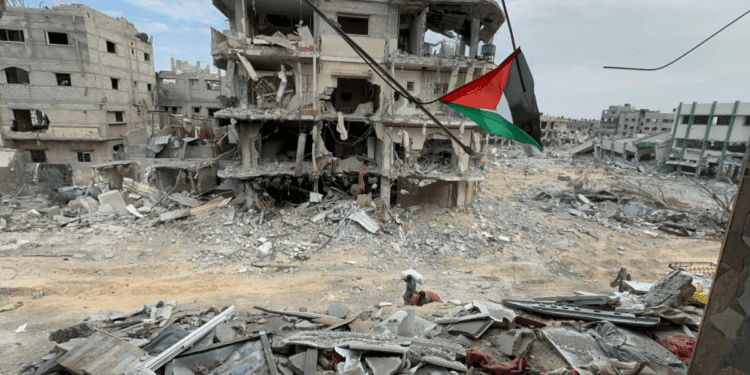The United Nations Relief and Works Agency for Palestine Refugees (UNRWA) has released a sobering assessment of the aftermath of Israel’s latest war on the Gaza Strip. According to the agency, clearing the rubble left behind by the conflict could take up to 15 years. This estimate, based on an assessment by the UN Environment Programme (UNEP), highlights the unprecedented scale of destruction in the Palestinian enclave. The report, released on July 15, 2024, states that the cleanup effort would require the removal of a staggering 40 million tonnes of debris. To put this into perspective, UNEP noted that this amount is “13 times more than the combined sum of all debris generated by other conflicts in Gaza since 2008.” The 2014 Israel-Hamas war, by comparison, resulted in only 2.4 million tonnes of rubble.
The UN says Gaza rubble cleanup could take 15 years, emphasizing the monumental task ahead. This prolonged timeline is not just due to the sheer volume of debris but also because of the hazardous nature of the rubble. UNRWA warned that the debris “poses a deadly threat for people in the Gaza Strip as it can contain unexploded ordnance and harmful substances.” The agency also revealed that some of the rubble is contaminated with asbestos, a toxic mineral known to cause lung diseases, including cancer. Adding to the complexity of the situation, UNEP reported that human remains are buried within the vast quantity of building debris. This grim reality underscores the human toll of the conflict and adds a layer of sensitivity to the cleanup process.
The logistical challenges of this massive undertaking are daunting. UNRWA estimates that more than 100 trucks would be required for the removal effort, with costs exceeding $500 million. This figure represents just a fraction of the overall reconstruction needs for Gaza. In May 2024, the UN Development Programme (UNDP) provided a broader perspective on the reconstruction efforts. Abdallah al-Dardari, director of the Regional Bureau for Arab States at the UNDP, estimated that rebuilding Gaza’s homes could take until 2040. The overall reconstruction of Gaza, according to UNDP estimates, would cost between $40 billion and $50 billion at minimum.
Al-Dardari drew a stark historical parallel, stating, “We have not seen anything like this since 1945.” The level of destruction has been so severe that the UNDP estimates Gaza’s human development index has regressed by 40 years. This index assesses factors such as years of schooling, educational attainment, health, and life expectancy at birth. “All investments in human development … for the last 40 years in Gaza have been wiped out,” al-Dardari remarked. “We are almost back in the ’80s.”
The scale of destruction becomes even more apparent when considering the intensity of the military campaign. In June 2024, Israel’s Army Radio, quoting military officials, reported that about 50,000 bombs had been dropped on Gaza by Israeli warplanes since October 7, 2023. Alarmingly, they added that 2,000 to 3,000 of these bombs did not explode, presenting an ongoing danger to civilians and complicating the cleanup efforts.
The war’s impact extends far beyond physical destruction. More than nine months into the conflict, vast areas of Gaza lie in ruins, exacerbated by a crippling blockade that has severely limited access to food, clean water, and medicine. The humanitarian crisis continues to deepen, with civilians bearing the brunt of the ongoing hostilities.
International aid organizations have struggled to provide adequate assistance due to the scale of the crisis and the ongoing security challenges. UNRWA, which has long been a crucial lifeline for Palestinian refugees, faces unprecedented demands on its resources and capabilities. The lengthy timeline for rubble removal and reconstruction raises serious questions about the future of Gaza and its inhabitants. The protracted nature of the cleanup and rebuilding process could have long-lasting effects on the region’s economy, social fabric, and potential for recovery. As the international community grapples with the aftermath of this devastating conflict, the UN’s assessment serves as a stark reminder of the long-term consequences of war. The mammoth task of clearing Gaza’s rubble is just the beginning of a much larger challenge: rebuilding lives, communities, and hope in a region that has seen too much destruction.
















